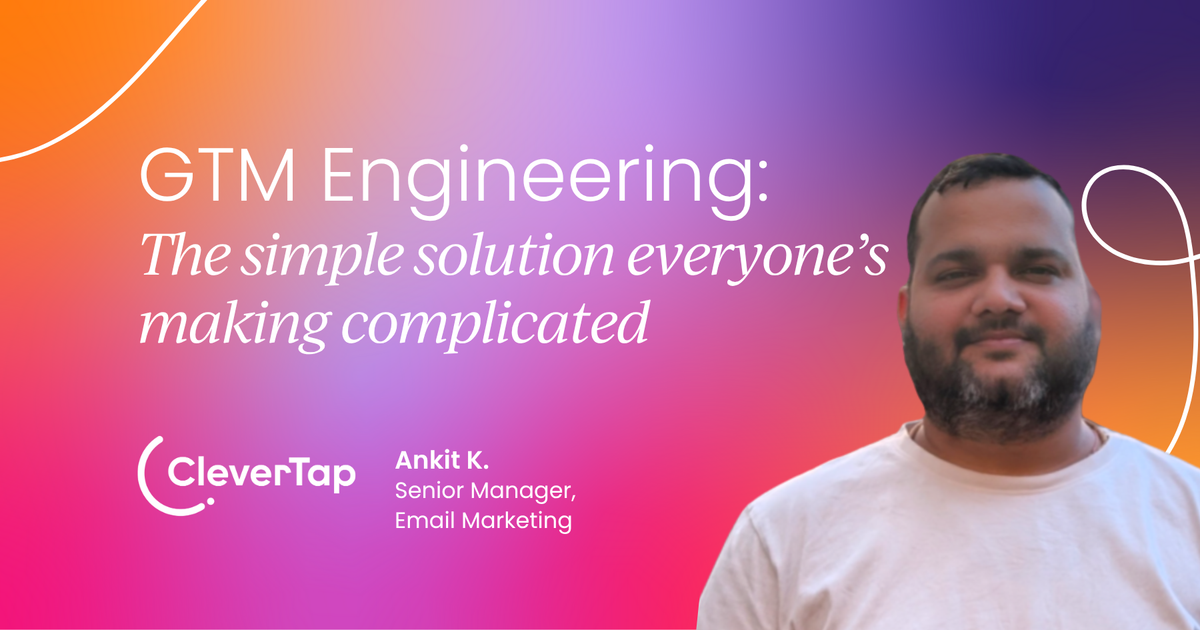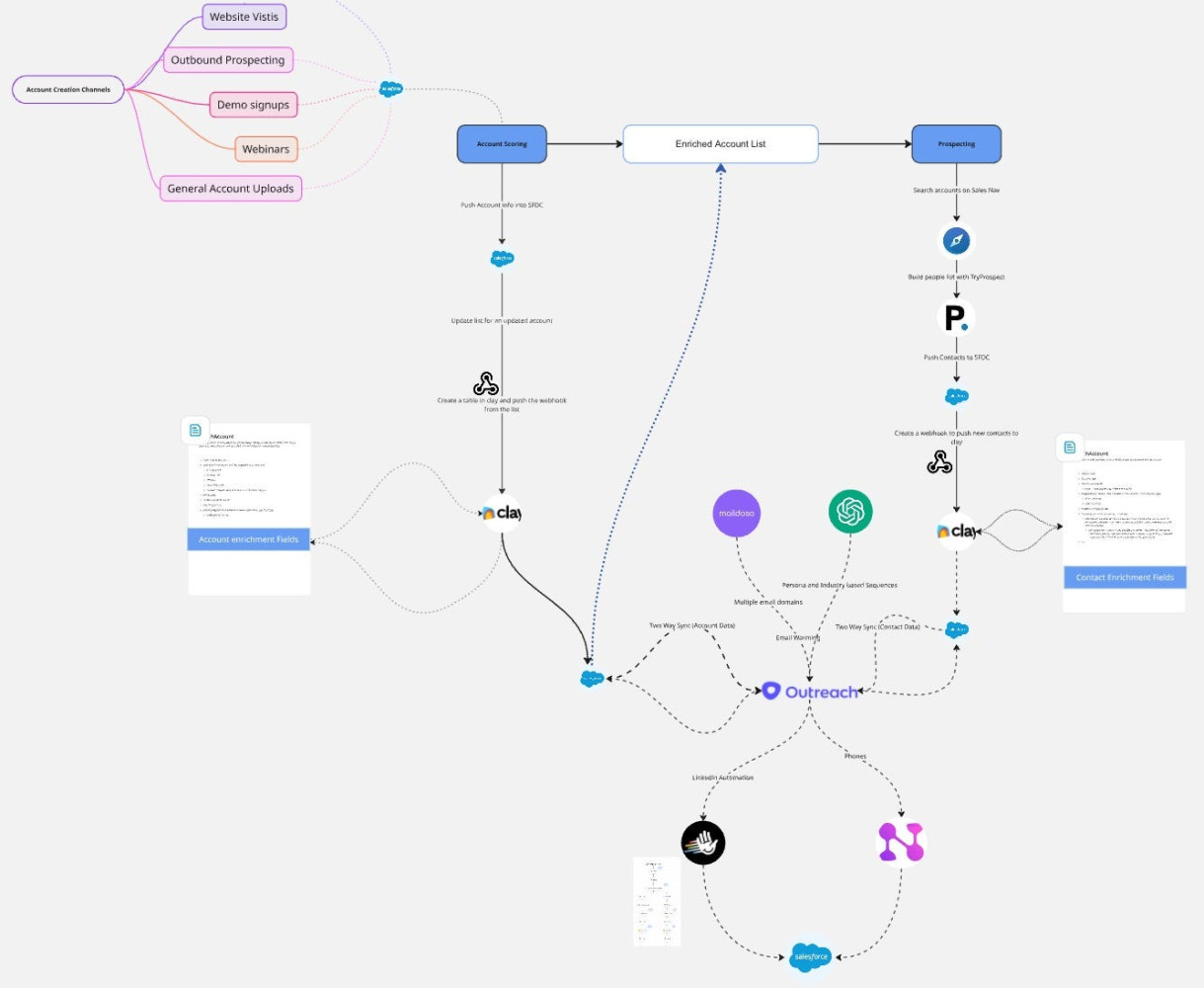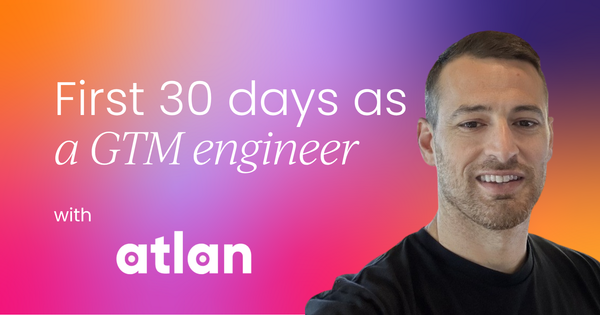If you’re stepping into a Go-To-Market (GTM) engineering role, your first month is critical. You’re not here to automate a few tasks; your goal is to become the force multiplier for the entire revenue team.
And the first 30 days are where you lay the foundation to do that.
Most GTM engineers fail early not because they aren’t technical, but because they don’t orient fast enough around business priorities and people problems.
This post is a tactical breakdown of what Phase 1 should look like and how to ship visible value in days, not months.
🎯 Your mission in Phase 1: Context + credibility + quick wins
Before building anything significant, you must understand the machine you aim to optimize.
You’re not building automation for elegance; you’re hunting for broken handoffs, manual pain, and messy workflows slowing down revenue. In the first 30 days, your success will come from three things:
- Mapping the GTM stack
- Shadowing sales and marketing to find friction
- Shipping 2–3 quick wins that make people’s lives easier

🔍 Step 1: Map the GTM stack
Think of this like reverse-engineering a product you’ve just inherited.
Document every tool in use across the GTM motion:
- CRM (e.g. Salesforce, HubSpot)
- Marketing automation (e.g., Marketo, Customer.io)
- Outreach (e.g., Salesloft, Outreach)
- Enrichment (e.g., Clearbit, Apollo, Clay)
- Analytics + attribution (e.g., BigQuery, Looker, GA4)

Then ask questions:
- Where is the data duplicated, lost, or old?
- What strategy is the sales team employing, and how can I make their life easier?
- Is the vision and sentiment of the sales team being taken into account with the strategy in place?
You’re looking for technical inefficiencies that create revenue drag.
🎧 Step 2: Shadow and listen (Not build)
Sit in on 10–15 calls across sales, marketing, and RevOps. Don’t pitch ideas, listen.
Ask:
- What workflows feel repetitive?
- What data do you wish you had when engaging a lead?
- What is resonating with prospects, and what is falling flat?
You’re not gathering requirements. You’re hunting for pain.
Wherever someone says, “I wish I didn’t have to do this manually,” that’s a signal.
🎨 Step 3: Execute a comprehensive TAM and ICP outline
TAM Goal: Have a strong idea of 3 to 6 verticals that can leverage your platform.
- Start by deeply understanding the problem your company solves
- Ask what kinds of companies may have this problem
- Get a clear outline and definition of each vertical
ICP Goal: Build out 3 personas for each vertical.
- Try to build each persona in the format of
- General Title (With Boolean for title tagging)
- What the key pains are based on industry
- What are the 3 features of value props that pertain to these pains.

⚡ Step 4: Ship quick wins (Fast)
Now that you’ve found some obvious inefficiencies, fix them.
Examples of great Phase 1 quick wins:
- Auto-enrich leads from LinkedIn using Clay → Salesforce
- Account scoring! Create a hypothesis about why accounts buy, then create triggers and prompts to uncover this information.
- The gold is in the case studies and if you don’t have case studies, start looking through all the demo calls.
- Push Slack alerts when high-scoring leads fill out demo forms
These don’t need to be perfect. Just functional.
The goal is to show, not tell:
“Hey, I heard your pain point, and solved it in 2 days.”
Bonus points if the automation is visible (e.g., real-time alerts or automatic lead assignment).
Visibility breeds credibility.
📅 Sample Week 1 Plan
Day : Focus
Monday: Access CRM + systems, meet with RevOps
Tuesday : Join sales calls, document manual pain
Wednesday: Audit campaign + outreach data
Thursday: Build first enrichment workflow
Friday: Present quick win + prioritize backlog

📈 What to track in Phase 1
You’re laying the groundwork for bigger results, but even Phase 1 should have impact metrics:
- 🚀 1 new campaign launched focusing on a specific persona and trigger
- 📥 Records cleaned and updated (Data is your foundation)
- ✅ Internal feedback: “This saved me 30 minutes a day”
- 🔁 Updated variables for messaging (Bonus for having it sync to and from your CRM)
Remember: The GTM engineer’s value is tied to speed-to-impact and revenue leverage.
🧠 Why this approach works
GTM Engineering isn’t about automating for automation’s sake. It’s about reducing revenue drag, increasing responsiveness, and building trust with the teams who carry quota.
The first 30 days aren’t about solving everything.
They’re about signaling:
“I understand your world, I move fast, and I solve real problems.”
Next: Phase 2, owning a workflow that moves pipeline
In the next post, I’ll break down how GTM engineers can go from “helpful automation” to owning revenue-critical workflows, with dashboards, scoring models, and campaigns that scale.
Until then: Map. Listen. Automate.
And make sure people know you are building to solve their pains.
Jake first published this article on LinkedIn here.



 5 min read
5 min read
 Follow us on LinkedIn
Follow us on LinkedIn






